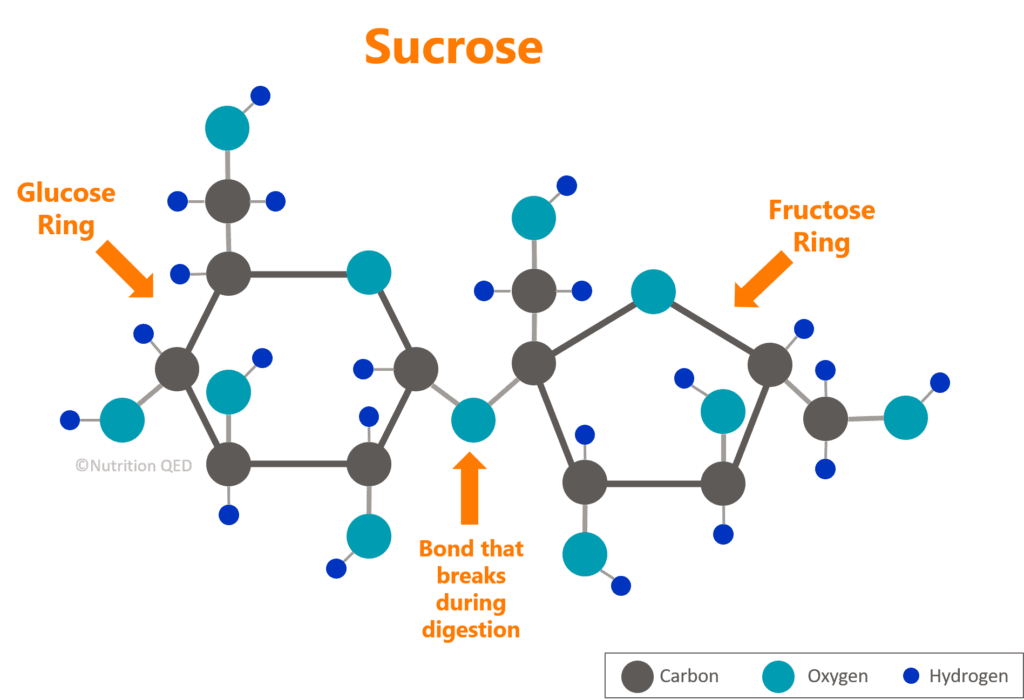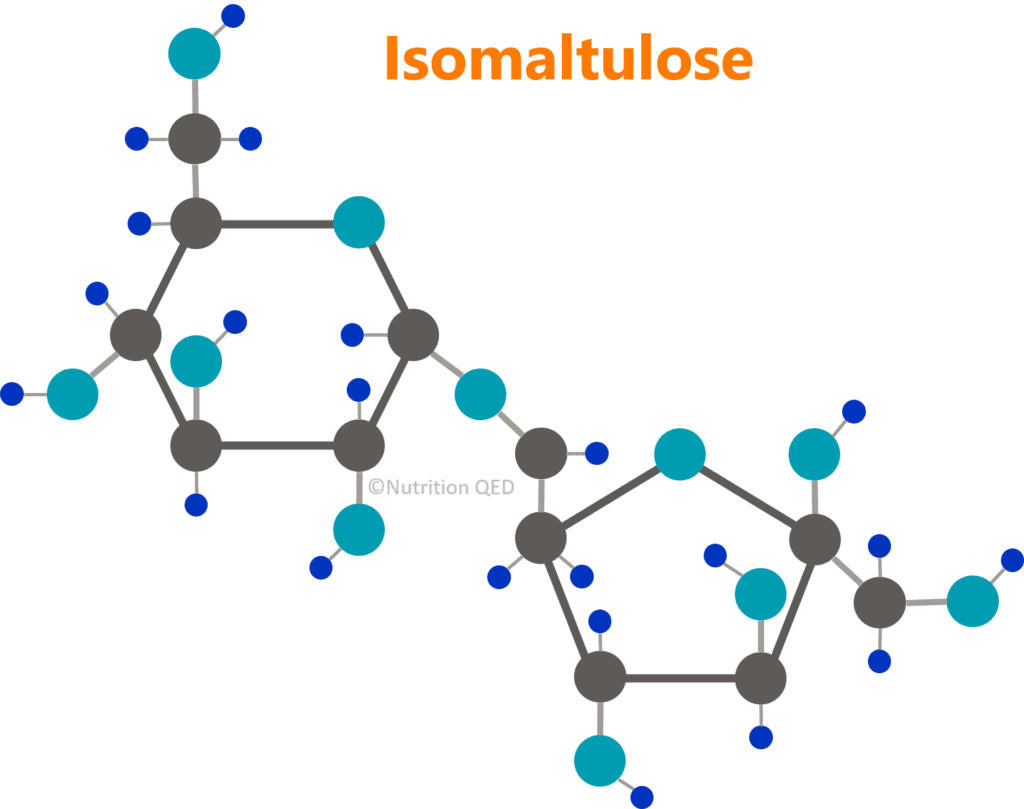Ah, carbohydrates. Perhaps the most controversial and misunderstood of the macronutrients in the current dietary landscape. Given that virtually all of us consume carbs regularly and many of us harbor preconceived notions about the right types and amounts, let’s delve into this macronutrient to understand how to integrate it into our personalized diets for optimal benefit.
What are carbohydrates?
Technically speaking, carbohydrates are naturally occurring organic compounds containing carbon, hydrogen and oxygen. Their typical molecular structure is CX(H2O)X, where X indicates that the number of carbon atoms is equal to the number of water molecules. Hence the name “carbon-hydrate.” Unlike hydrophobic fat molecules which are also made up of carbon, hydrogen, and oxygen, simple carbohydrates are hydrophilic and dissolve readily in water. (Think: white sugar.) Protein also contains carbon, oxygen and hydrogen, but always has nitrogen and often other elements as well.
Carbohydrates are usually classified into two main categories: simple carbohydrates and complex carbohydrates. Simple carbohydrates consist of either one or two molecules. Monosaccharides are single-molecule carbohydrates, while disaccharides are composed of two molecules. The most commonly discussed monosaccharides are glucose, fructose (sometimes called fruit sugar), and galactose because they make up the majority of monosaccharides in our food. However, there are several other monosaccharides found in plant cell walls, including arabinose, mannose, and the sugar alcohols sorbitol and xylitol.
Disaccharides are created when two monosaccharide units bond together. Among the most recognized disaccharides are lactose, commonly known as milk sugar, comprising glucose and galactose; sucrose, consisting of glucose and fructose; and maltose, resulting from the binding of two glucose molecules. Additionally, other nutritionally significant disaccharides include isomaltose, trehalose, and lactulose, while maltitol and lactitol serve as disaccharide alcohol sweeteners.
Complex carbohydrates consist of three or more monosaccharide units. When a carbohydrate comprises between three and ten monosaccharides bonded together, it is categorized as an oligosaccharide. Oligosaccharides have gained prominence in recent years due to the growing awareness of FODMAPs (fermentable oligo-, di-, monosaccharides, and polyols) and their potential impact on digestive health. On the other hand, carbohydrates with more than ten monosaccharide units are called polysaccharides and are predominantly or completely composed of glucose. Examples of polysaccharides include starch, glycogen, cellulose, and chitin.
The reason for giving you all this information is because I want you to understand something important: Almost all complex carbohydrates that we are capable of digesting are comprised of and therefore are absorbed as glucose, the same as simple carbohydrates.
What happens to carbohydrates during digestion?
Upon ingestion, carbohydrates undergo mechanical and enzymatic breakdown throughout the digestive tract, culminating in the small intestine where they are finally split into absorbable monosaccharides. Various enzymes produced by the mouth, pancreas, and small intestine work to cleave the bonds within polysaccharide, oligosaccharide and disaccharide molecules.
The following graphic is of one sucrose, or table sugar, molecule. As mentioned before, sucrose is a disaccharide made of one glucose connected to one fructose. In the small intestine, the enzyme sucrase breaks the bond between the two so the fructose and glucose can be absorbed individually.


To truly understand carbohydrate digestion, it’s essential to recognize that our digestive enzymes operate with precision. For instance, sucrase exclusively breaks the specific bond between a glucose molecule and a fructose molecule as they are connected within sucrose. By comparison, isomaltulose, present naturally in honey and sugarcane, also comprises one glucose molecule and one fructose molecule, but their bond location differs from sucrose, as shown below. Consequently, sucrase cannot cleave this bond. Instead, isomaltulose is digested by the enzyme isomaltase.


If an individual lacks or produces insufficient amounts of the enzymes required to break the bonds between monosaccharide molecules, the carbohydrate will remain intact as it passes through the digestive system. The best example of missing carbohydrate-related enzymes is those required to breakdown fiber. No human can digest fiber because our bodies do not make the required enzymes. As well, lactose intolerance arises when an individual lacks sufficient lactase, the enzyme required to break lactose into glucose and galactose. Any wholly or partially indigestible carbohydrate proceeds intact to the large intestine, where gut microbes typically utilize them for fuel.
For any carbohydrate that we can digest, the monosaccharides are absorbed into the body, where they are transported to the liver to begin the process of metabolism. Because I love details and want to be sure I am giving you as complete and accurate information as I can, the following table lists all of the monosaccharides, their dietary sources, whether humans absorb them, and any other interesting-to-me notes.
| Category | Monosaccharide | Main Dietary Sources | Absorbable? | Additional Notes |
| Aldose | Glucose | Many di-, oligo-, and polysaccharides | Actively | Most nutritionally abundant of all |
| Galactose | Primarily dairy products | Actively | Small amounts in many fruits and veg | |
| Mannose | Small amounts in many fruits, veg, legumes, seaweed, and coffee | Actively | Not metabolized so excreted intact in the urine | |
| Arabinose | Legumes, nuts, seeds and whole grains | No | Inhibits sucrase enzyme, fermentable by bacteria | |
| Xylose | Cereal and bread grains, frutis, some vegetables | Passively | Most will not be absorbed, fermentable by bacteria | |
| Ribose | Part of RNA (so present in small amounts in almost all foods) and vitamin B2 (found in foods high in this vitamin, like mushrooms, spinach and almonds) | Yes (mechanism unclear) | Also made by human cells as it’s essential for mitochondrial function | |
| Ketose | Fructose | Mainly fruit, honey, table sugar and variations of corn syrup | Actively | Most people have a limit to how much fructose they can absorb |
| Allulose | Mostly used as an added sweetener; very small amounts in few foods (ex: figs, kiwis, raisins, maple syrup) | Actively | Not metabolized so excreted intact in the urine; produced commercially by heating fructose | |
| Uronic Acid | Glucuronic acid | Many fruits and veg, especially cruciferous vegetables, apples, bean sprouts and grapefruit | Yes | |
| Galacturonic acid | Mostly pectin and legumes | Small amounts | Because pectin is a type of fruit fiber that humans can’t digest, we don’t absorb very much | |
| Mannuronic acid | Seaweed | Don’t know! | Typically bonded with guluronic acid | |
| Guluronic acid | Seaweed | Don’t know! | Typically bonded to mannuronic acid | |
| Sugar Alcohol | Glucitol / sorbitol | Mostly dried fruit and fresh stone fruit; artificially produced to be an added sweetener | Slowly and passively | Fermentable by bacteria |
| Xylitol | Mostly used as an added sweetener from wood or plant-based xylose | Slowly and passively | Fermentable by bacteria | |
| Galactitol | None | Don’t know! | Made by human cells due to galactosemia and bacteria | |
| Deoxysugars | Deoxyribose | Part of DNA (so present in small amounts in almost all foods, especially fresh and unprocessed) | Yes (mechanism unclear) | |
| Deoxygalactose | Meat, game, and poultry; part of artificial sweetener sucralose | Small amounts | ||
| Fucose | Very small amounts in seaweed, mushrooms, seeds and other fruits and veg | No | Fermentable by bacteria to short-chain fatty acids | |
| Rhamnose | Rare but most abundant in legumes, nuts, and seeds | Small amounts |
What impact do carbohydrates have in the body?
Once absorbed, monosaccharides travel directly to the liver via the portal vein. Describing all the possible metabolic pathways for the 14 absorbable monosaccharides would require a full dissertation, which I don’t want to write and you don’t want to read! The simplified version is that the liver converts almost all non-glucose monosaccharides into glucose. With the remaining monosaccharides and all the glucose, the liver will:
- Create energy for itself,
- Create substances necessary for the detoxification process,
- Store them as glycogen for future energy needs,
- Release them into the blood stream to be used by other tissues throughout the body:
- Muscles: burn as energy or store as glycogen,
- Kidneys and brain: use as energy,
- Fat tissue: use as energy to create fatty acids
- Other cells: create RNA and DNA
- Convert them into fat, then store some and release the rest into the blood stream where fat tissue will absorb and store them. (Note: this is why high sugar diets can be linked to elevated blood triglycerides and non-alcoholic fatty liver disease. The liver has to do something with the glucose that exceeds its usage and storage capabilities!)
In a nut shell, carbohydrates primarily serve as an energy source, but also contribute to detoxification and play roles in genetic material synthesis. Unlike fat and protein, which serve as foundational elements for the human body, carbohydrates do not play a significant role as building blocks for cells.
How do carbohydrates impact insulin?
Carbohydrate digestion and absorption increases insulin secretion and blood sugar levels, impacting various bodily functions. However, the intricate relationship between carbohydrates and insulin warrants a dedicated discussion beyond the scope of this post.
What foods contain carbohydrates?
Alright, I’m about to get on my soap box, so y’all get ready…
It drives me c-r-a-z-y when people say they “don’t eat carbs” because they try not to eat “starchy” carbs which come from grains, potatoes, and whatever else they have decided to put in this category. So let me be sure that you do not say such ridiculous things by telling you this:
THE PRIMARY MACRONUTRIENT IN ALL VEGETABLES, FRUITS AND LEGUMES IS CARBOHYDRATE.
Please, please, please share this post with any- and everyone who has ever told you that they don’t eat carbs, but still consume fruits, veggies, legumes, nuts or seeds. Please. You can use the picture of the apple’s nutrients in this other post as an example. Okay, now that it’s off my chest, I will stop shouting, step off of my soapbox, and we can move on like civilized people…
Almost all plant foods are high in carbohydrate. This is because, unlike for humans, carbohydrate is the primary component of cellular structure for plants. The exception is nuts and seeds, which are plant-based foods with a larger concentration of fats and proteins than carbohydrates. That’s not to say there is no carbohydrate in them, because there certainly is; it’s just not the dominant macronutrient. For example, almonds are about 77% fat, 15% protein, and 8% carbohydrate.
The only animal-based products that naturally contain carbohydrates are dairy, albeit in varying amounts. For example, one cup of plain whole cow’s milk contains approximately 13 grams of carbohydrate, whereas the same amount of cheddar cheese contains less than 2 grams.
And just to be sure we are on the same page, all sweeteners fall under the category of simple carbohydrates, making them a form of sugar—whether it’s table sugar, brown sugar, honey, molasses, agave, cane juice, maple syrup, and so forth. While some are more natural and potentially healthier due to additional substances they contain, from a carbohydrate and blood sugar standpoint, they’re essentially equivalent. (I won’t delve into artificial sweeteners or lab-produced options like high fructose corn syrup here, as they are synthetic and best avoided as much as possible.)
Are there good carbs and bad carbs?
Not really. Too much glucose in our bloodstream at once can be detrimental to our health. This often occurs when we consume excessive amounts of easily digestible carbohydrates, such as low-fat chocolate milk, soda, desserts, sweet snacks, and highly processed grain products devoid of fiber—think of foods like white bread. The impact on our blood sugar worsens when we consume these “simple” carbohydrates separately from other foods that contain fat, protein and fiber, which can slow down the digestion and absorption of the carbs.
Although delving fully into this topic exceeds the scope of this post (and will be covered in future ones), high blood glucose levels strain our pancreas, provoke a defensive response in our cells, and can inflict damage on vascular walls, among other consequences.
Moreover, the body doesn’t seem to register the calories from carbohydrates when they’re consumed without fat or protein. Consequently, we may still feel hungry and are more prone to overeating. (I’ve personally experienced this when having sugary cereal with skim milk for breakfast—it takes three bowls to feel satisfied!) Additionally, there’s substantial evidence indicating that blood sugar spikes can be addictive, driving us to seek them out more frequently, with simple carbohydrates being the easiest to digest and quickest to absorb.
In summary, once carbohydrates are digested, the resulting monosaccharides are handled very similarly, and thus are not inherently good or bad. The issue lies in the types of carbohydrates we consume, as well as how many and when we consume them. Opting for a large quantity of easily digestible carbohydrates on an empty stomach can have a significantly negative impact on the body compared to consuming them at the end of a meal or alongside foods rich in fat, protein, and fiber.
What happens if we eat more carbohydrates than we can use?
Excess carbohydrates are first converted to and stored as glycogen for future energy needs. Once glycogen storage capacity is reached, monosaccharides are converted to and stored as fat, for which no limit has been found. However, while the body performs these conversions and storage actions, excessive glucose can lead to cellular and metabolic disruptions throughout the body, including in the brain.
Do we actually need carbohydrates?
In short, yes we do, but maybe not as many as we’ve been led to believe or for the reasons that immediately come to mind.
You may not know this, but the entire body, including the brain, can use fat for energy. And since energy production is the primary use of carbohydrates in the body, clearly that is not a reason to consume them.
Glucose is a necessary component in the creation of RNA and DNA, allows the process of fatty acid creation to proceed, and is involved in the liver’s detoxification pathways. Those are critical parts of a normal functioning body for which there appears to be no substitute. However, the body is capable of creating glucose from some types of fats and amino acids in a process known as gluconeogenesis.
So, why do we need to consume carbohydrates? Plant-based foods are the only sources of phytonutrients and fiber, both of which are crucial to our health and well-being. As well, many essential vitamins and minerals are found only in plant-based foods. Because carbohydrates are the building blocks of plants, giving up all carbs would mean eliminating whole classes of really important nutrients from our diets. As such, I highly recommend maximizing your intake of colorful plant-based foods to ensure you are getting all the fiber, vitamins, minerals and phytonutrients your body needs to function optimally. Beyond that, carbohydrate consumption is fully a personal choice!
Conclusion
In conclusion, understanding carbohydrates empowers you to make informed dietary choices aligned with your unique needs and preferences. While carbohydrates can serve as a valuable energy source and contribute to various bodily functions, mindful selection of how many, what kinds, and when you consume them is key for optimal health and well-being.
Image by Stephanie Dunne.
Sources:
— Ala-Jaakkola R, Laitila A, Ouwehand AC, Lehtoranta L. Role of D-mannose in urinary tract infections—a narrative review. Nutr J. 2022;21(18). https://doi.org/10.1186/s12937-022-00769-x
— Beaugerie L, Flourie B, Marteau P, Pellier P, Franchisseur C, Rambaud JC. Digestion and Absorption in the Human Intestine of Three Sugar Alcohols. Gastro. 1990;99:717-723.
— Darzi J, Frost GS, Swann JR, Costabile A, Robertson MD. L-rhamnose as a source of colonic propionate inhibits insulin secretion but does not influence measures of appetite or food intake. Appetite. 2016 Mar 1;98:142-9. doi: 10.1016/j.appet.2015.12.011.
— Ding T, Song G, Liu X, Xu M, Li Y. Nucleotides as optimal candidates for essential nutrients in living organisms: A review. J Func
Foods. 2021 Jul;82(104498). https://doi.org/10.1016/j.jff.2021.104498
— Gropper SS, Smith JL. Advanced Nutrition and Human Metabolism. 6th ed. Belmont, CA: Wadsworth Cengage Learning; 2013.
— Hall J. Guyton and Hall Textbook of Medical Physiology. 12th ed. Philadelphia, PA: Saunders Elsevier; 2011.
— Harvard T. C. Chan School of Public Health. Added sugar in the diet. In Nutrition Source. Accessed on March 24, 2015.
— Kim J, Jin YS, Kim KH. L-Fucose is involved in human–gut microbiome interactions. Appl Microbiol Biotechnol. 2023 Apr;107:3869–3875. https://doi.org/10.1007/s00253-023-12527-y
— Lewis JG. Here’s what happens to your brain when you give up sugar for Lent. In Health + Medicine. Accessed on March 24, 2015.
— Mahoney DE, Hiebert JB, Thimmesch A, Pierce JT, Vacek JL, Clancy RL, Sauer AJ, Pierce JD. Understanding D-Ribose and Mitochondrial Function. Adv Biosci Clin Med. 2018;6(1):1-5. doi: 10.7575/aiac.abcmed.v.6n.1p.1.
— Pol K, Puhlmann ML, Mars M. Efficacy of L-Arabinose in Lowering Glycemic and Insulinemic Responses: The Modifying Effect of Starch and Fat. Foods. 2022 Jan 8;11(2):157. doi: 10.3390/foods11020157.
— Sanford Burnham Prebys Medical Discovery Institute. “A dietary sugar that may prevent melanoma from metastasizing identified.” ScienceDaily. 2015. Accessed May 1, 2024.
— ScienceDirect. “Monosaccharide.” ScienceDirect Topics, Elsevier, 2023. Accessed April 30, 2024.
— ScienceDirect. “Sorbitol.” ScienceDirect Topics, Elsevier, 2016. Accessed May 1, 2024.
— UC Davis Library. Human Anatomy and Physiology Preparatory Course. “3.3: Carbohydrates.” MedLibreTexts, Libretexts, 2023. Accessed April 30, 2024.
— UC Davis Library. Microbiology. “2.5.1: Carbohydrate Molecules.” BioLibreTexts, Libretexts, 2023. Accessed April 30, 2024.
— University Hospitals. “Is Allulose the Perfect Sweetener?” 10 Mar 2024. Accessed May 9, 2024.
— Yoshizane C, Mizote A, Arai C, Arai N, Ogawa R, Endo S, Mitsuzumi H, Ushio S. Daily consumption of one teaspoon of trehalose can help maintain glucose homeostasis: a double-blind, randomized controlled trial conducted in healthy volunteers. Nutr J. 2020;19(68). https://doi.org/10.1186/s12937-020-00586-0.


Pingback: Protein Unpacked: Understanding the Role of Protein in Your Diet and Body – Nutrition Q.E.D.
Pingback: The Vital Role of Protein in the Human Body – Nutrition Q.E.D.